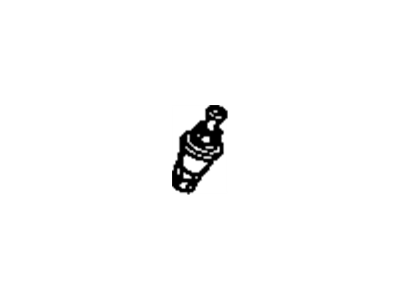
My Garage
My Account
Cart
Genuine Chevrolet Astro Secondary Air Injection Check Valve
SAI Check Valve- Select Vehicle by Model
- Select Vehicle by VIN
Select Vehicle by Model
orMake
Model
Year
Select Vehicle by VIN
For the most accurate results, select vehicle by your VIN (Vehicle Identification Number).
3 Secondary Air Injection Check Valves found
Chevrolet Astro Secondary Air Injection Check Valve
Each OEM Chevrolet Astro Secondary Air Injection Check Valve we offer is competitively priced and comes with the assurance of the manufacturer's warranty for the part. Furthermore, we guarantee the speedy delivery of your orders right to your doorstep. Our hassle-free return policy is also in place for your peace of mind.
Chevrolet Astro Secondary Air Injection Check Valve Parts Questions & Experts Answers
- Q: What is the function and diagnostic procedure for the Air Injection Reaction system, and how should Secondary Air Injection Check Valve and Secondary Air Injection Pump be inspected or replaced on Chevrolet Astro?A:The Air Management system also decreases Carbon-Monoxide and Hydrocarbon exhaust emission by the Air Injection Reaction system where air is injected to the exhaust manifold to continue burning of exhaust gas after expelling it from the combustion chamber. Components for such a system are an air pump, a diverter valve or EAC valve, check valves, and the relevant piping. Air is provided using a belt-driven air pump, and filtered via a centrifugal filter fan before reaching the EAC valve; check values ensure that exhaust air does not return back into the air pump. Located in the intake manifold runner is a deceleration valve to allow air into the intake manifold during high vacuum conditions on federal/carbureted engines. During cold starts, the PCM supplies current to the EAC solenoid to pump air to the exhaust ports while as the coolant temperature increases; the PCM kills the current to the solenoid to pump air to the air cleaner. Some simple checks can be carried out in the comfort of your home as illustrated next Check check valves for exhaust noise Check air pump for noise or right air flow Another piece of equipment used in the process is the air pump, which is of vane type and is self-lubricated and hence does not need to be lubricated; if the air pump produces sound, it means it has to be replaced. Hoses and pipes used should be inspected for deterioration and leaks in hoses or pipes found on the pressure side can be spotted using a soapy water solution. During the installation of a new drivebelt, a check on the component should be made to determine if it is worn or if it is seated tightly on the pulleys. For component replacement, one has to disconnect the battery cable, and the air pump, EAC valve, check valve, air injection pipe assembly, and the deceleration valve can be removed and reinstalled in the reverse way, tightening all the connectors that were removed.













